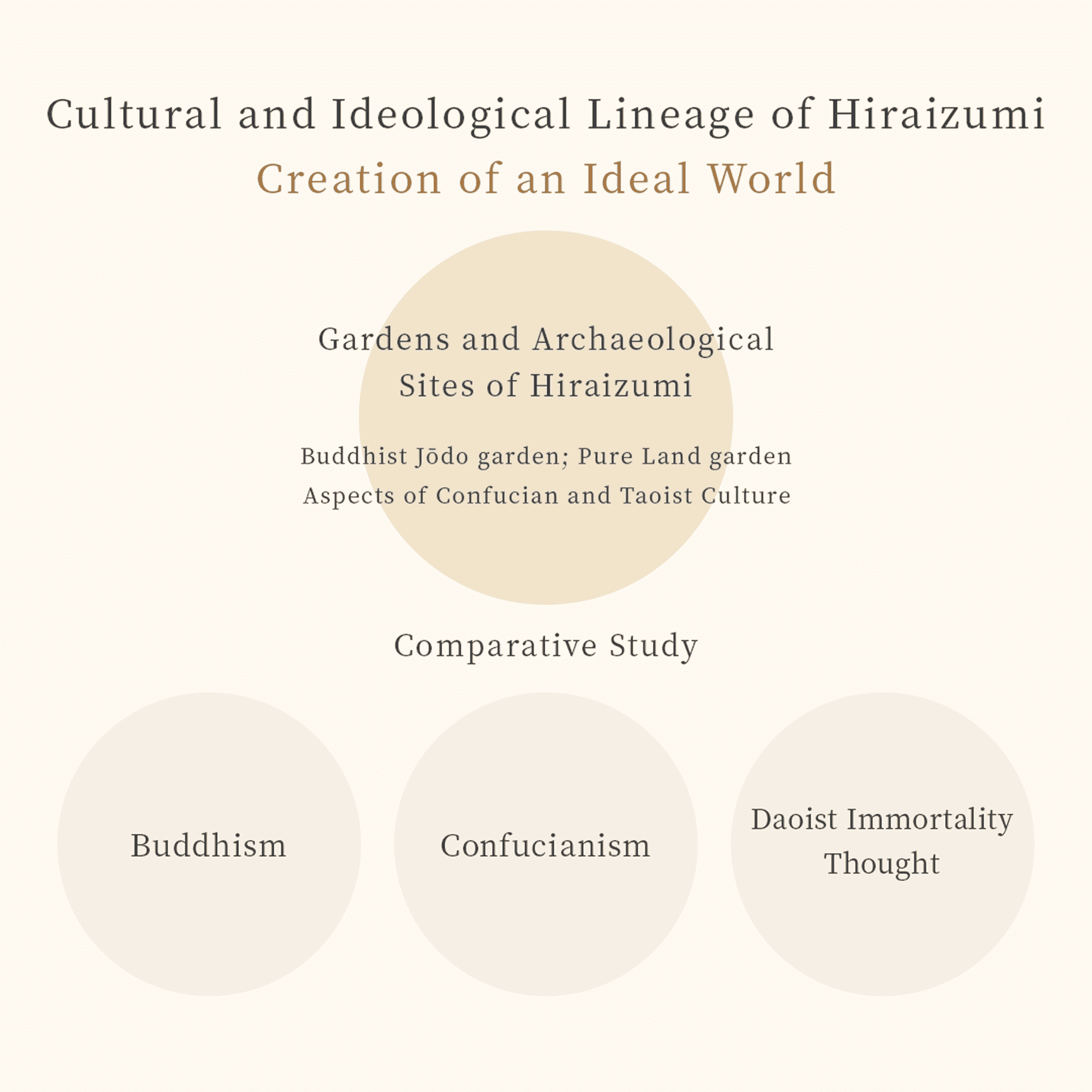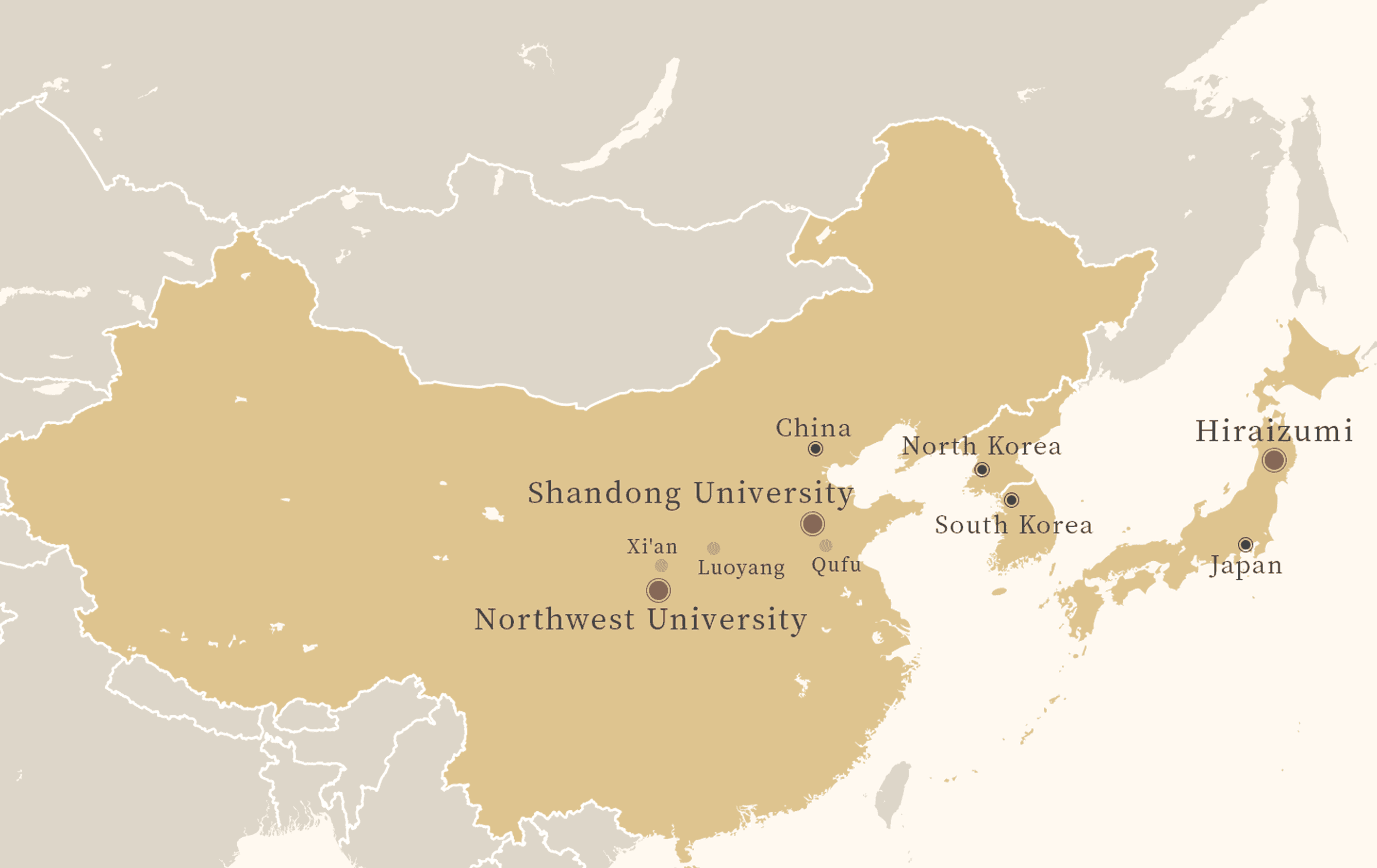Project overview
The cultural and ideological genealogy of Hiraizumi will be studied from the perspective of the ‘creation of an ideal world’ and compared with the ancient cultures of East Asia, such as Buddhism, Confucianism and Shenxian thought, using an interdisciplinary research approach.
Research plan
- In cooperation with the Iwate Prefectural Board of Education and other organizations, we will carry out research while adopting scientific analysis methods, and actively return the results of our research to society.
- We will take up the gardens and archaeological sites in Hiraizumi that remain in their original 12th century state, and focus on various aspects of Confucian and Taoist culture, etc. that lie deep within the garden-pond structure, which has traditionally been treated as a Buddhist 'Pure Land Garden'.
- The cultural and ideological genealogy of Hiraizumi will be compared with the ancient cultures of East Asia, such as Buddhism, Confucianism and Shenxian thought, using interdisciplinary research from the perspective of 'the creation of an ideal world'.

Planned projects
- In 2012, we plan to visit Shandong Province with a person in charge of the actual excavation at Hiraizumi to conduct preliminary research.
- We will carry out research on ancient Chinese gardens together with the School of Cultural Heritage of Northwest University, the School of History and Culture of Shandong University, the Institute of Archaeology of Zhejiang Province, Northeast Normal University and others.
- During the period of the specially funded project, every year we will carry out research on Píngquán and unexcavated Chinese gardens and garden remains.
- In addition to analyzing soil deposits in gardens and analyzing the composition of excavated objects, a report will be made at the Hiraizumi Cultural Forum at the end of January.
- We will also organize and collect excavation reports and other documents on gardens and garden remains in Kyoto and Nara, which retain part of their pre-12th century state, and in Chang'an, Luoyang and Qufu, which date back to before the Tang dynasty in China (a specially appointed associate professor of Chinese archaeology will be in charge of this).
- An international symposium is scheduled to be held in 2015 to present the results of the project internationally and socially.

Research Organization
- Researchers from the Faculty of Education (history and Chinese studies), the Faculty of Humanities and Social Sciences (Chinese studies), the Faculty of Science and Engineering (physical and chemical instrumental analysis) and the Faculty of Agriculture (soil analysis and morphological analysis) participate in the Center for Hiraizumi Studies, which will promote Hiraizumi research in a multifaceted and cross-disciplinary manner, and proactively promote it as a distinctive project.
- In addition, we will work with the Iwate Prefectural Board of Education, which has excavated archaeological sites in Hiraizumi, and the Iwate Higher Education Consortium, which has researchers who conduct research on Hiraizumi from an ethnographic and religious history perspective.
- As for overseas research institutions, joint research will be carried out with which there is already a track record of collaboration, such as the School of Cultural Heritage of Northwest University (which excavated Chang'an Castle in the Han and Tang Dynasties), the Ningbo Institute of Archaeology (in charge of applying for World Heritage status for the Maritime Silk Road), Northeast Normal University (research center on Koguryo and Bohai Sea), the School of History and Culture of Shandong University and China Confucius Research Institute. Through the collaboration with these institutes, it will be expected that the significance of the Hiraizumi culture would be clarified from interdisciplinary study of both domestic and international perspectives.

